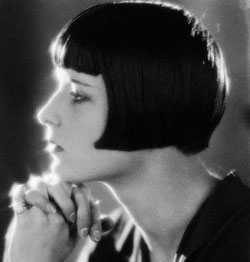Men look far, women look close
In primitive times men took on hunting, so today they looked far better, while women who were gathering, they were more outstanding in observing at close range.
This finding helps us understand why the brains of men and women develop in two completely different directions for tens of thousands of years. Because of that difference, men often outperform sisters in assessing future long-term goals.

(Artwork: Photobucket)
Psychologists from Hammersmith & West London University (UK) invited 48 women and men to take part in an experiment. They drew many small dots on paper sheets and placed them at different distances. The team then used a laser pen to illuminate the paper. They asked volunteers to observe to see if the laser beam hit the points.
The results showed that men were more accurate than women when the paper was placed at a distance of 100 cm, while female volunteers were more accurate when the target was 50 cm or less (ie within range). with by hand).
' There is much evidence that the process of processing visual information at long distance and near distance occurs at different locations in the brain. The results of our study show that the male brain processes distant visual information better, while the female brain excelles in dealing with visual information at close distance , 'said Helen Stancey, team leader. save, speak.
According to Stancey, the difference in the ability to handle visual information may stem from the division of human labor in primitive times. Men then hunt and women gather.
' Because only focusing on gathering, women need to observe well at close range. Meanwhile, hunting forced men to develop remote observation capabilities , 'she said.
- Why do women need more glasses than men?
- Women are more likely to be born when there are relatives nearby
- Why should men not be close to their wives when they fall asleep?
- The difference between Adam and Eva
- Women are more important than lovers
- 6 interesting facts about ancient women that women themselves are surprised
- The frightening 'crossover' story of old women
- Why are women 'more wet' than men?
- Women need more sleep than men
- Why do women cry more than men?
- Attractive women find work easier
- Women are smarter than men
 'Fine laughs' - Scary and painful torture in ancient times
'Fine laughs' - Scary and painful torture in ancient times The sequence of numbers 142857 of the Egyptian pyramids is known as the strangest number in the world - Why?
The sequence of numbers 142857 of the Egyptian pyramids is known as the strangest number in the world - Why? History of the iron
History of the iron What is alum?
What is alum?